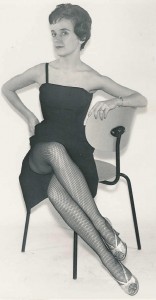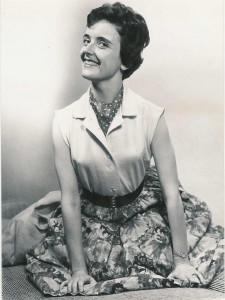Unsolicited Advice
There are quite a few scenarios in life, when one becomes the target of a barrage of unsolicited advice. Motherhood, certainly, jumps to mind as the most prominent example. As we become parents, surviving the trials and errors of child rearing, we feel battle-hardened, involuntarily enlightened, full of lessons-learned and to be shared with newcomers to the universe of parenthood. And bursting with all this new information, one is often hard-pressed not to inundate the unsuspecting new mother or father with – well, that barrage of unsolicited advice.
Caring for a loved one with dementia also puts us into a unique group of battle-hardened people. People who want to share the “had I known this in advance” experiences in hopes that they may save somebody else a bit of trouble; or maybe, in order to tell somebody about the struggles we’ve undertaken to show our loved one just how much we truly love them – knowing full well, that the very person this love is meant for no longer understands.
So, with that, here’s my unstructured, unorganized, stream-of-consciousness laundry list of unsolicited advice about lessons learned from the journey through dementia:
1. Get a Durable General and Health Care Power-of-Attorney!
The most helpful piece of advice (and help – thanks, sweet family!) I have gotten in the course of this odyssey was to get a Durable General and Health Care Power-of-Attorney (POA) for my mother – while she was still able to sign one. Make sure the general POA includes wording for financial matters, as well.
The National Cancer Institute defines the durable power-of-attorney as follows:
A type of power of attorney. A power of attorney is a legal document that gives one person (such as a relative, lawyer, or friend) the authority to make legal, medical, or financial decisions for another person. It may go into effect right away, or when that person is no longer able to make decisions for himself or herself. A durable power of attorney remains in effect until the person who grants it dies or cancels it. It does not need to be renewed over time. Also called DPA.
(National Cancer Institute, U.S. National Institutes of Health, www.cancer.gov)
The Family Caregiving Alliance National Center on Caregiving has a great FAQ on durable POAs at: http://www.caregiver.org/caregiver/jsp/content_node.jsp?nodeid=434
Their website www.caregiver.org is filled to the brim with excellent information and advice.
I have had to use that power-of-attorney in so many situations that were logistically challenging as they were, but would have been bureaucratic nightmares without the power-of-attorney.
As wide-spread as dementia is, there still seems to be an indescribable ignorance to the handicaps demented people face.
Before I had the power-of-attorney, I almost got dizzy in some interminably circular conversations with credit card reps, bankers, even newspaper sales people:
“I speak for my mother, because my mother has dementia and can no longer make rational decisions about these matters. No, I don’t have a power-of-attorney. No, she can’t come to the phone to discuss this with you, because she has dementia. No, she no longer is able to read the newspaper (use a credit card, work her bank account), and no, she doesn’t want another subscription (credit card, banking services). No, she can’t come to the phone to explain that to you because she has dementia…”
Get that durable power-of-attorney as soon as you can! And get a living will with it, while you are at it!
2. If your loved one is still able to understand, talk with them about dementia. If possible, tell them they have dementia. There still are so many stigmas attached to dementia, that shame, embarrassment, and anger are ready companions to any discourse, even just thoughts about the disease. But pretending everything is just fine can add challenges that may not need to be there.
A long time before my mother was diagnosed, she used to make jokes about Alzheimer’s. Back then I thought that her humor was simply a bit inappropriate. In retrospect, I believe she was already struggling to keep up appearances, divert any suspicions, possibly even convince herself that dementia was nothing for her to worry about.
For many years, as a family, we came up with excuses, justifications, seemingly reasonable explanations for my mother’s scatterbrained behaviors. And many of them may have been true. After all, having three children within three and a half years, will drive anybody close to dementia.
Yet, when I think how much easier things became when we all acknowledged Mr. Alzheimer in our midst, I wish we had talked about it sooner. Instead of working hard to pretend that everything was ok, my mother felt free to rant at the disease for making her life more challenging. When something wasn’t going right, we could all jokingly blame that darn Mr. Alzheimer (to whom I, of course, apologize, since he’s not to blame).
As my mother’s care level increased and she needed to get help performing some of those tasks for which we need privacy or independence to maintain our dignity – such as bathing and eating – , we could always talk about the disease, and she didn’t need to worry that it was her who was somehow not smart enough, not capable enough, not independent enough. I realize that for some families to talk about dementia might not be an option, but don’t be too quick to think that is you. I never would have guessed that my mother would be able to accept the disease. Yet she did. And she has weathered the many many challenges much better for that acceptance.
3. Get in touch with your local Alzheimer’s Association chapter (www.alz.org)!
Not only do they have some of the kindest people who will listen to your sorrows, they also have a great newsletter with community events and updates on new research, as well as a plethora of information. The main website (www.alz.org) will let you search for contact information for your local chapter.
4. Be the squeaky wheel!
My mother lives at an assisted living facility. So I can’t talk about care giving at home. However, after three moves between assisted living facilities, and researching about a dozen or so on each move, I feel like I have a pretty good sense about what’s out there in terms of assisted living and reminiscence care units. First of all, no matter how much you pay (well, except for the $10,000 or more a month facilities) most assisted living facilities are understaffed, and the staff is underpaid. That, of course, means that turnover is high, and you may get to know many different dedicated, but overburdened caregivers during your loved ones stay at such a facility. On the upside, it also means that if you don’t like a caregiver, chances are, they won’t be around in a few months.
Because caregivers are stretched to the limit, things fall through the cracks. I have found myself becoming educated about medications and treatments, because I am my mother’s only advocate. She can’t say if something isn’t working or she doesn’t want something.
After a hip fracture, my mother had to live at a skilled nursing facility for a few months. She had a great nutritionist, a charming activities director, but a horrible director of nursing unable or unwilling to deal with the challenges of dementia, who, hence, was trying to “chemically restrain” my mother. And since skilled nursing facilities can easily write prescriptions, they bombarded my mother with heavy duty medications that were clearly inappropriate for dementia. I was not asked before my mother was medicated and soon had the added challenge of seroquel anger. (More on that in another blog post)
Note to all you wonderful caregivers out there: I hope you will comment on this blog and let us know about the many difficulties of your jobs and let us know how we as family members can make your life easier.
5. Take your loved one out for excursions while you still can.
My mother loved going out for meals, sunbathing, dressing up to go to the opera, or anything that made her feel like she wasn’t trapped at the assisted living facility. She no longer is able to easily leave, and, although we did a lot, I wish we could have done more.
I will add to the list as more things pop to mind. In the meantime, I hope anybody who reads this blog, will feel inspired to add their own tips and tricks.
It takes a village to raise a child. It takes that same community to care for the elderly.

